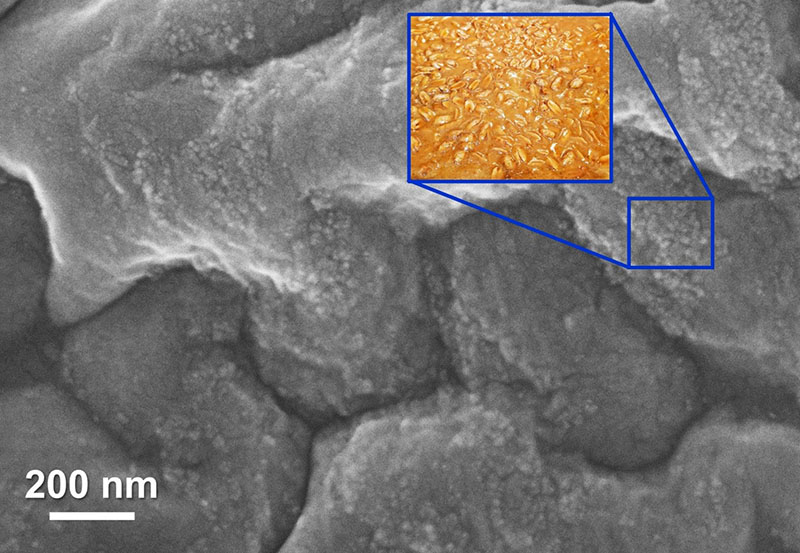MXenes are an incredibly versatile family of two-dimensional materials discovered at Drexel University in 2011 whose many exceptional properties have far-ranging potential applications from paint-on antennas to portable kidney dialysis.
Recently, researchers in associate professor Ekaterina Pomerantseva’s Materials Electrochemistry Group have demonstrated that it is possible to transfer MXenes extraordinary tunability and properties to other materials, specifically oxides for energy storage. As they report in ACS Applied Nano Materials, when MXenes are used as precursors containing vanadium and niobium atoms mixed at the atomic scale, the MXenes translate their chemical composition and morphology to the product materials which results in greater electrochemical stability and battery performance.

SEM image of solid-solution (V, Nb)2CTx-MXene derived oxide nanocomposite showing spherical nanoparticles of niobium oxide embedded in vanadium oxide crumpled nanosheets. The morphology of the produced nanocomposite resembles peanut brittle, shown in the inset.
Both vanadium and niobium oxides show great potential as electrodes for electrochemical energy storage. Using solid-solution MXenes, Pomerantseva’s group has developed a method for mixing their elements at the atomic scale in solution through a reaction with hydrogen peroxide followed by oxide phase crystallization. This creates a nanocomposite material in which tiny niobium oxide nanospheres are embedded into vanadium oxide nanosheets with tight contact between nanosheets and nanospheres. Pomerantseva explains a way to visualize this is similar to how peanut brittle is made – when it dries, the niobium spheres are tightly embedded into the vanadium sheets, like the peanuts in hardened caramel. “If you physically mix vanadium and niobium oxides the vanadium and niobium atoms will be much farther apart,” she notes. “And the ability to create tight contact between particles creates much more stability and better, longer lasting battery performance.”
In addition to the promising outlook for improved battery performance, this research opens the door to a new path for atomic scale synthesis through MXenes that has tremendous investigative potential.
This research was conducted in collaboration with Distinguished University and Bach Professor Yury Gogotsi’s Drexel Nanomaterials Institute and was led by MESC+ MS student Marcelo Andrade, who was co-supervised by Professors Pomerantseva and Gogotsi. Timofey Averianov from Pomerantseva’s group and Chris Shuck and Kateryna Shevchuk from Gogotsi’s group contributed to the reported findings.
You can read the full paper here https://pubs.acs.org/doi/full/10.1021/acsanm.3c02004#